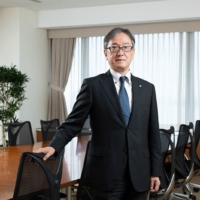Meta
Rei Sasaguchi
Oct 16, 2002
Sep 11, 2002
Aug 21, 2002
Jul 24, 2002
Jun 19, 2002
May 15, 2002
Apr 17, 2002
Mar 20, 2002
Feb 20, 2002
Nov 21, 2001
Nov 14, 2001
Oct 17, 2001
Sep 26, 2001
Sep 19, 2001
Sep 5, 2001
Jul 18, 2001
Jun 20, 2001
























